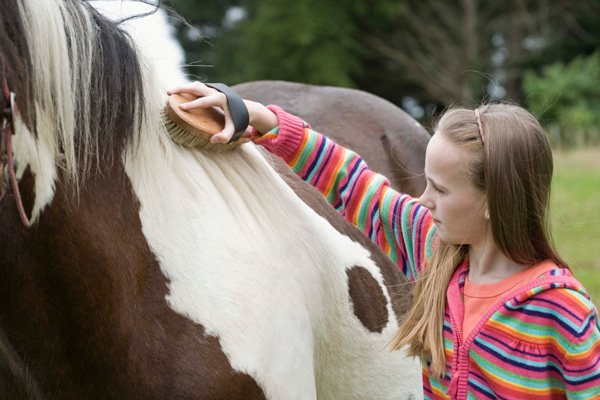 Credit: Thinkstock Horses in a wet environment, as well as young or old horses or those with compromised immune systems, are more susceptible to rain rot.
Credit: Thinkstock Horses in a wet environment, as well as young or old horses or those with compromised immune systems, are more susceptible to rain rot.A bacterial organism known as dermatophilus congolensis, which thrives in high moisture conditions, causes rain rot. Interestingly, while it is classified as a bacterium, it acts like a fungus in many ways.
Ultimately, rain rot presents itself as painful scabs that form most often over the horse’s topline. When the scabs are pulled away, they tend to take clumps of hair with them, leaving bald patches over the horses back, hips, face and other areas. In severe cases, the lesions may become extremely large and impact multiple layers of skin, which can impair the use of the horse until the condition clears up. It also seems that light-colored horses may be more susceptible to rain rot; however, any horse can present with the condition.
Although dermatophilus congolensis is commonly found in the soil, rain rot seems most likely to occur when the skin is softened or compromised, as is the case in high moisture conditions, hence the name. Interestingly, however, young horses (and possibly old horses) with poorly developed or functioning immune systems also seem to be more at risk of rain rot. Further, some horses will carry the rain rot organism without ever showing signs of the actual condition, but they can spread it to other horses.
Curing rain rot can often be as simple as bathing the horse with an antimicrobial shampoo, cleaning or replacing grooming tools, and keeping the horse dry and separated from other horses with active cases when possible.
The usual treatment presents a bit of a problem during winter and early spring, however, in that bathing horses is a challenge for many. Topical antimicrobial products may be useful, and in very severe cases of rain rot, the horse might require antibiotic injections. Severe cases that do not respond to treatment might also require a skin biopsy to determine the exact cause of infection. Michigan State University Extension recommends contacting your veterinarian if you suspect severe rain rot.
For more information visit Michigan State University Extension.


